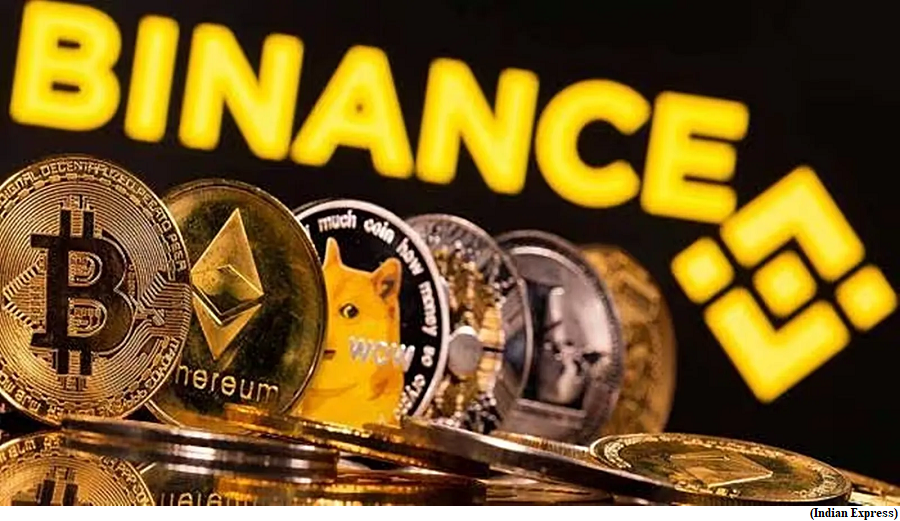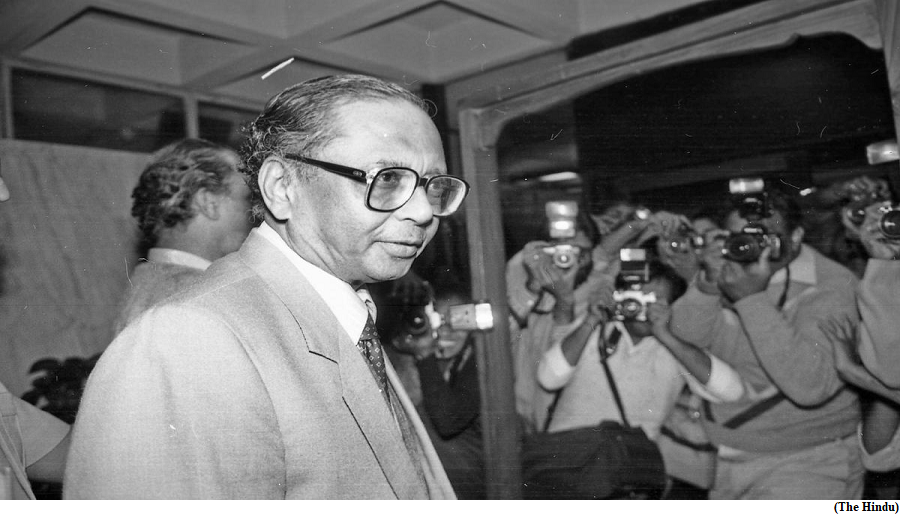Why did FIU IND act against virtual asset providers (GS Paper 3, Economy)

Why in news?
- Recently, the Financial Intelligence Unit India (FIU IND) issued show-cause notices to nine offshore virtual digital asset service providers (VDA SPs), including Binance, Kucoin, Huobi, Bitfinex and MEXC Global, among others.
- This was for “operating illegally” without complying with the provisions of the Prevention of Money Laundering Act, 2002 (PMLA).
- It has also been written to the Secretary of the Ministry of Electronics and Information Technology to block URLs of the mentioned entities.
What is the premise of the non-compliance?
- In March 2023, Virtual Digital Asset Service Providers (VDA SPs) in India were brought under anti-money laundering/counter financing of terrorism regulations.
- They were mandated to comply with PMLA 2002, verify the identities of onboarded clients, and maintain records of their financial positions and potentially suspicious transactions. This obligation applies to all VDA SPs operating in India irrespective of physical presence.
- Non-registration made entities non-compliant despite serving Indian users. To put it in perspective, the entities “though catering to a substantial part of Indian users were not getting registered and coming under the Anti Money Laundering (AML) and Counter Financing of Terrorism Network (CFT) framework”. Currently, 31 VDA SPs have registered with FIU IND.
What purpose does the PMLA compliance serve?
- The objective of the PMLA and its reporting obligation are to enable monitoring and tracking of financial transactions to curb money laundering and terror financing.
- It addresses one of the primary concerns of any regulator about the purported anonymity of the crypto assets and their potential use for unlawful purposes. The mandatory KYC verifications would ensure lack of anonymity and businesses not encountering multiple hurdles.
- The government has made it amply clear that it intends to enforce PMLA obligations on offshore entities if they satisfy the ingredients of the March 2023 PMLA notification on VDA SPs.
- This is also in line with India’s efforts through the G-20 where it has been advocating for global regulation of cryptocurrency and consequently the framework proposed by the International Monetary Fund and the Financial Stability Board to the G-20 in September 2023 is likely to be actioned in 2024.
What considerations emerge when looking to regulate VDAs?
- The Bureau for International Settlements (BIS), which is the global forum for cooperation among central banks, in a report about financial stability from crypto assets in emerging economies (August 2023) observed three high-level policy options under consideration. These include an outright ban, containment and regulation.
- BIS observed that an outright ban may not prove enforceable. This is because of the pseudo-anonymous nature of crypto markets. There could be a possibility that regulators lose all sight of the market, further shrinking their transparency and making them less predictable.
- Containment would imply controlling the flows between crypto markets and traditional financial systems. However, BIS argued that the strategy would not address the vulnerabilities inherent in the crypto markets and could result in financial stability risks.
- About regulation, motivation to regulate the asset varies across jurisdictions. The report holds that it must be ensured that the benefits of regulating and supervising are greater than the costs involved.
- Furthermore, for emerging market economies three issues are of importance, that is:
- defining the (regulatory) authority or entity and their scope,
- then the scope of regulation in terms of either activity or entity, and lastly,
- filling in the data gaps to understand the technology and interconnections.
India 1991 crisis and the RBI Governor role
(GS Paper 3, Economy)
Why in news?
- S.Venkitaramanan, an IAS officer who served as the Governor of the Reserve Bank of India (RBI) from December 1990 to December 1992 passed away recently.
- Two events in which he had participated are worth recording.

Balance of payments in 1990s:
- Starting in late 1990, India faced a severe balance of payments stress. This had been precipitated by a slowing of inward remittances and a rise in the price of oil following the invasion of Kuwait by Saddam Hussain. The current account of the balance of payments was subjected to a double whammy, a reduction of receipts and a rise in the value of imports.
- In 1990-91 the current account deficit swelled to 3 percent of the GDP, a level highest by far in two decades. There was speculation that India would default on its external payment obligations.
- It was at that moment that the RBI led by Mr. Venkitaramanan played a sterling role, which in effect came to pledging its gold to international banks for a hard currency loan.
Pledging of India’s gold reserves:
- In April 1991, the Government raised $200.0 million from the Union Bank of Switzerland through a sale (with a repurchase option) of 20 tonnes of gold confiscated from smugglers (sic). Again, in July 1991, India shipped 47 tonnes of gold to the Bank of England to raise another $405.0 million.
- This action helped the country repay its international donors and creditors, though it was not sufficient to completely absolve the country of the crisis.
- For the RBI to have used its gold to stave off a default was an act of courage. Indeed, it was the smartest economic management. It only needs to be recalled that India imports around 80 percent of its oil to recognise the practical value of the manoeuvre.
- Default would have narrowed India’s access to the global loan markets to finance its imports were its export earnings to fall short in the future. With the sale and pledging of India’s gold reserves, a breathing space within the payments crisis had been created.
Economic reforms:
- Before its efforts to raise international loans, the RBI had begun a programme of import compression, implemented mainly via raising the cash margin on imports. While this had commenced before Mr. Venkitaramanan had assumed office as Governor, it was under him that the policy assumed greater force.
- The cash margin was hiked four-fold between October 1990 and April 1991. Supplementary measures that raised the cost of imports were implemented too, together constituting a stringent effort to rein them in.
- This strategy turned out to be a winner, and the current account deficit flipped from a high of 3 percent in 1990-91 to a mere .3 percent of GDP in 1991-92. This almost eliminated the need to raise foreign exchange to finance India’s non-debt payments.
- Though a government led by Narasimha Rao was to take office in mid-1991 and set in motion measures, including a devaluation of the rupee, to improve the balance of payments over the long term there is reason to believe that the immediate improvement of the balance of payments may be largely attributed to the import compression put in place by the RBI.
- This is implied by the data, which show that while imports contracted substantially in 1991-92 exports did not rise, they declined slightly.
Conclusion:
- At a critical time and in the thick of the BoP crisis, the main task of the Reserve Bank under the leadership of the Governor, S. Venkitaramanan, turned out to navigate the country through the troubled waters.” The crisis was “successfully resolved”.
The Kharsawan massacre of 1948
(GS Paper 1, History)
Why in news?
- On January 1, 1948, the town of Kharsawan in present-day Jharkhand witnessed a massacre reminiscent of what happened in Jallianwala Bagh in 1919.
- Police opened fire at a crowd gathered for a protest and the weekly haat (market), killing hundreds, or by some accounts, thousands of Adivasis.

Demand for a separate tribal state:
- In 1912, the Bengal Presidency was partitioned to create the Bihar and Orissa Province. However, within this new province, there existed a large Adivasi population with its distinct culture, and many grievances with both the British and non-tribal populations.
- Thus, in 1912 itself, the demand for a separate tribal state was articulated for the first time at St Columba’s College, Hazaribagh.
- Over the next few years, this demand would gain momentum. The Simon Commission, mandated to report on constitutional reforms in India, gave it official credence in 1930.
- While Orissa was carved out in 1936, Adivasis’ demands remained unheard. In 1938 the Adivasi Mahasabha was formed to continue the struggle, with Jaipal Singh Munda (1903-70), former captain of the Indian hockey team, emerging as its tallest leader.
The problem of Kharsawan’s merger with Orissa:
- Kharsawan was a small princely state, less than 400 sq km in area, lying to the west of Jamshedpur.
- At the time of Independence, Kharsawan, alongside 24 other princely states in eastern India, decided to accede to the Union of India and join the state of Orissa.
- After all, Kharsawan and neighbouring Saraikela (which today form the Seraikela Kharsawan district in Jharkhand), had more Odia speakers than Hindi speakers.
- But most Adivasis did not support this merger. They also did not want to join Bihar, the alternative option. What they wanted was a separate Adivasi state. In protest, a huge meeting was called at Kharsawan on January 1, 1948, the day when the merger was to take place.
- This was also the day of the weekly haat in the town. Jaipal Munda himself was supposed to be present and address the crowd.
- The crowd comprised young and old, men and women, those from nearby villages and those living hundreds of kilometres away. While the merger of Kharsawan was a major issue, many had come to simply catch a glimpse of Jaipal Munda.
What happened on January 1, 1948?
- The sheer size and enthusiasm of the crowd spooked the Orissa military police, which had taken charge of law and order in the town.
- Keep in mind, this was the time when princely states from across the country were being integrated with the Union of India. This created a situation where the smallest spark could trigger something horrendous. That is exactly what happened on January 1, 1948.
- On the day of the massacre, Kharsawan resembled a “police camp”. Amidst this, the 50,000-strong crowd gathered, raised their demands, and waited eagerly for Jaipal Munda to show up. Moreover, many more were shopping at the nearby haat. Kharsawan, which had a population of less than 7,000 in 2001, was full to the brim.
- However, due to some reason, Munda could not show up. Many believe that his mere presence could have averted the tragedy that followed. The crowd was restive and pretty much surrounded by the police. Suddenly, the cops opened fire with their Sten guns.
- There was a well near the spot where the massacre took place and the police started disposing of dead bodies in it. After the well was filled with bodies, the rest were taken to the jungle and dumped there. Yet, those injured probably had it even worse.
Aftermath:
- To date, there is no consensus regarding just how many lives were lost in the massacre.
- The then Orissa government confirmed only 35 dead, a number which was published in The Statesman two days later, the headline read ‘35 Adibasis Killed in Kharsavan’.
- However, actual numbers are likely to have been far higher. In Memoir of a Bygone Era (2000), PK Deo, a former Lok Sabha MP and the last ruler of Kalahandi, stated that at least 2,000 Adivasis were killed, and many more were likely injured.
- The world knows about the villain of the Jallianwala Bagh Massacre, but the Reginald Dyer behind the Kharsawan massacre hasn’t been unmasked, even today.
- Today, a memorial stands at the marketplace in Kharsawan, which some have described as a “political pilgrimage” site in the state.




